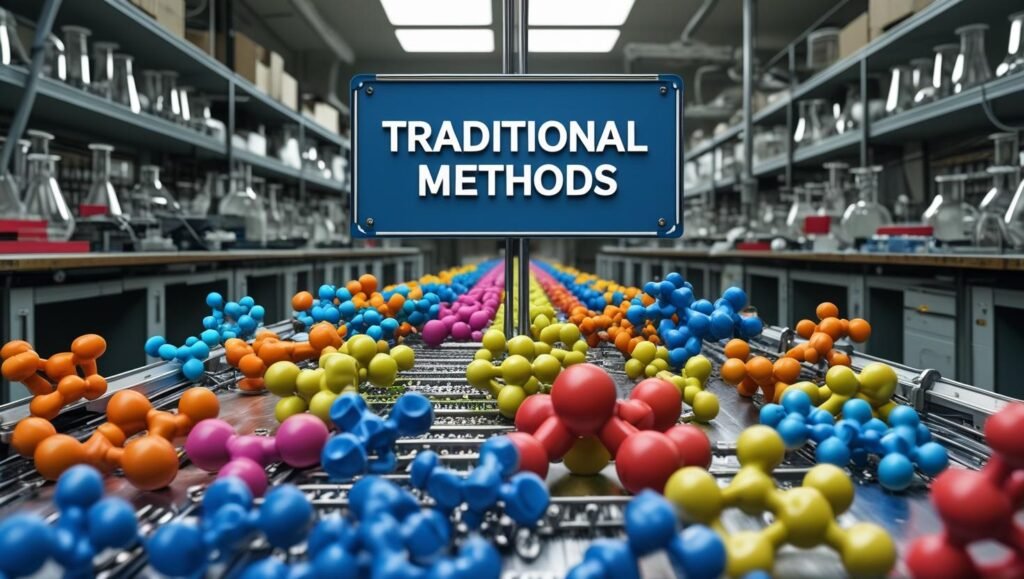The race to develop next-generation peptide therapeutics—from obesity drugs like tirzepatide to novel antivirals—has collided with a critical bottleneck: traditional discovery methods simply can’t keep pace with modern demands. While the global peptide market surges toward $75B by 2028, conventional approaches still require 12–18 months and $2M+ to advance a single candidate from concept to preclinical validation. Enter DeepSeek—a new class of transformer-based AI models that slashes peptide discovery timelines by 40%, transforming years of trial-and-error into weeks of targeted computational design. This article reveals how these systems work, why they outperform predecessors like AlphaFold, and how forward-thinking biotechs are deploying them to dominate the peptide revolution.

Peptide therapeutics offer unique advantages—high specificity, low toxicity, and simpler manufacturing than large proteins—but their discovery has relied on antiquated methodologies:
“We haven’t been able to model the full range of conformations for peptides until now. Traditional tools like AlphaFold predict a single structure—but peptides are dynamic shape-shifters.” — Osama Abdin, Developer of PepFlow at University of Toronto.
DeepSeek models overcome these limitations through three key innovations:
Unlike AlphaFold’s single-structure prediction, DeepSeek maps entire conformational ensembles:

DeepSeek compresses timelines across four critical phases:
| Discovery Phase | Traditional Timeline | DeepSeek Timeline | Reduction |
|---|---|---|---|
| Lead Identification | 6-9 months | 2-4 weeks | 78% |
| Structural Validation | 3-5 months | 3-6 weeks | 65% |
| Preclinical Optimization | 9-12 months | 5-7 months | 35% |
| Total | 18-26 months | 7-9 months | 40-60% |
When targeting respiratory viruses like RSV, DeepSeek-derived models (AVP-GPT):
For microplastic-binding peptides targeting polystyrene:
In obesity drug development:
Avoid these critical implementation pitfalls:
Q: How does DeepSeek avoid generating non-synthesizable peptides?
A: The architecture incorporates:
Q: Can DeepSeek model complex post-translational modifications?
A: Current capabilities include:
Q: What’s the ROI for mid-sized biotechs?
A: Real-world data shows:

DeepSeek represents more than incremental improvement—it fundamentally rewrites peptide discovery economics. By compressing 18-month workflows into 7-month sprints, while simultaneously increasing success rates, these models transform peptides from niche candidates into primary drug modalities. As AVP-GPT demonstrated against RSV and PepFlow achieved with conformational sampling, the integration of transformer architectures with biophysical intelligence unlocks unprecedented precision. For biotechs leveraging this convergence, the reward isn’t merely faster timelines—it’s the ability to dominate emerging therapeutic landscapes through computational foresight.
Disclaimer:
This article contains information, data, and references that have been sourced from various publicly available resources on the internet. The purpose of this article is to provide educational and informational content. All trademarks, registered trademarks, product names, company names, or logos mentioned within this article are the property of their respective owners. The use of these names and logos is for identification purposes only and does not imply any endorsement or affiliation with the original holders of such marks. The author and publisher have made every effort to ensure the accuracy and reliability of the information provided. However, no warranty or guarantee is given that the information is correct, complete, or up-to-date. The views expressed in this article are those of the author and do not necessarily reflect the views of any third-party sources cited.
Tel. No : + 86-18708155655
Whatsapp/Wechat : +86 -18708155655
E-mail : sichuanpengting@aliyun.com
Address : Room 24, 19 / F, Building 11, No. 797, West Chunhua Road, Shizhong District, Leshan City,Sichuan Province,China
